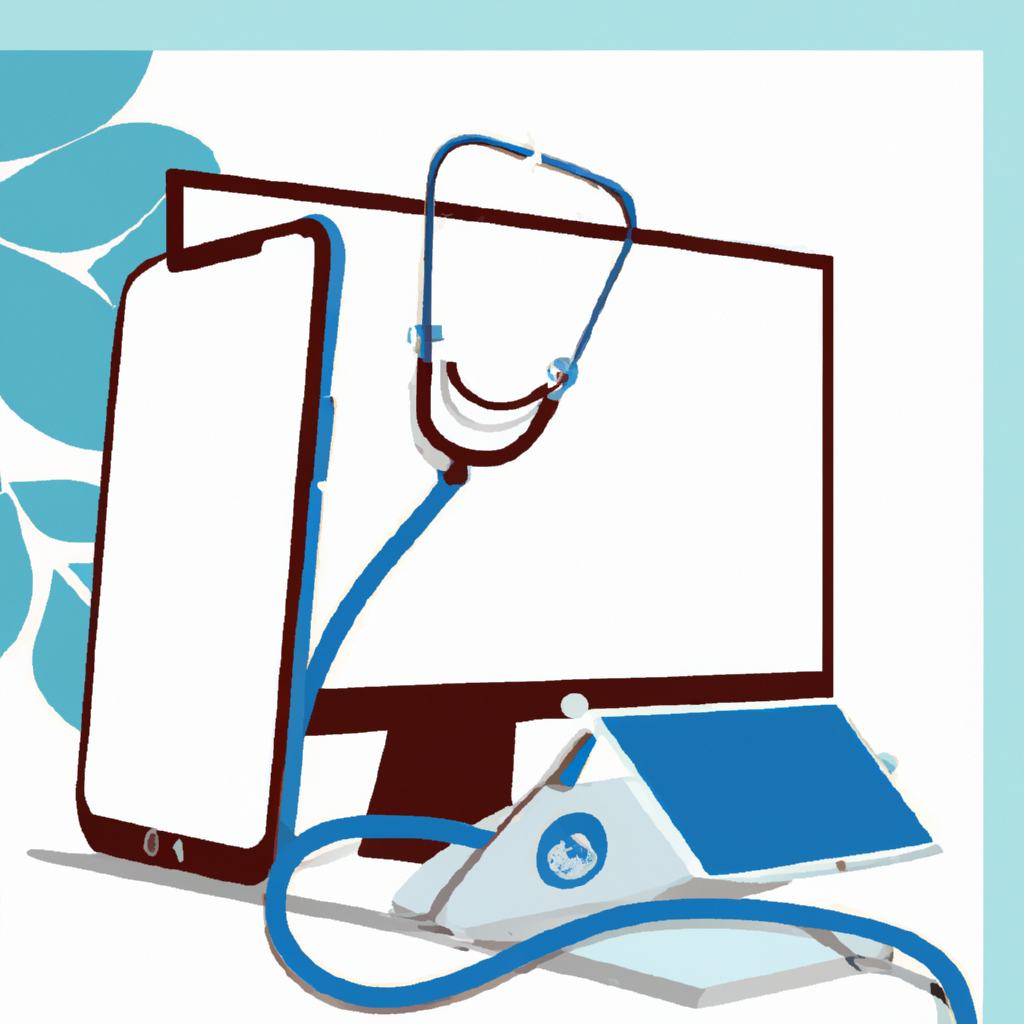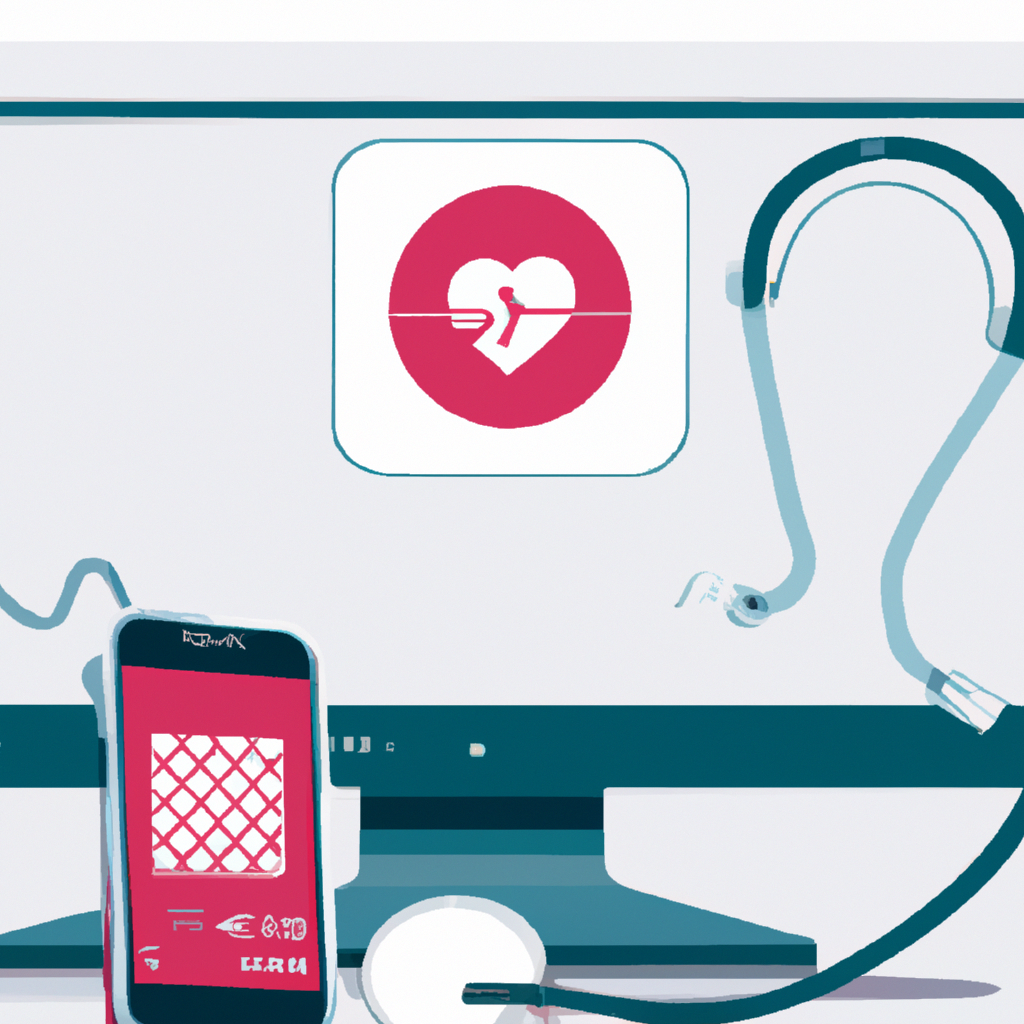TeleMedicine, together with the Electronic Medical Records (EMR) / Electronic HealthRecord (EMR) and the Health Information Exchange (HIE) forms the triangle of better healthcare.
TeleHealth, is the larger picture of which TeleMedicine is an important and integral component.
In recent years, telemedicine has emerged as a new way of delivering healthcare services. As the name suggests, telemedicine involves using technology to provide remote healthcare services to patients who are not physically present in the same location as their healthcare provider. With telemedicine, patients can receive healthcare services using video conferencing, online chat, phone calls, and other technologies.
Telemedicine has many benefits, including increased access to healthcare services for people who live in rural or remote areas, those with mobility or transportation issues, and those who require timely medical attention. In this article, we will explore the benefits and potential drawbacks of telemedicine, as well as examine some of the different types of telemedicine services that are available.
The Benefits of Telemedicine
One of the most significant benefits of telemedicine is increased access to healthcare services. For people who live in rural or remote areas, telemedicine can provide access to healthcare services that might not otherwise be available. With telemedicine, patients can receive healthcare services from healthcare providers who are located in other cities or even other countries. This can be particularly beneficial for patients who live in areas where there are few healthcare providers or for those who require specialized medical care.
Telemedicine can also be beneficial for patients who have mobility or transportation issues. For example, elderly patients or those with disabilities may find it difficult to travel to a healthcare provider’s office for an in-person visit. With telemedicine, these patients can receive healthcare services from the comfort of their own home, which can be more convenient and less stressful than traveling to an office.
Another benefit of telemedicine is that it can provide healthcare providers with a way to communicate with patients in a timely manner. For example, if a patient has a question about a medication or needs a prescription refill, they can use telemedicine to communicate with their healthcare provider without the need for an in-person visit. This can be particularly beneficial for patients who live far away from their healthcare provider or who have busy schedules that make it difficult to schedule an appointment.
Types of Telemedicine Services
There are many different types of telemedicine services that are available, each designed to meet the specific needs of patients. Some of the most common types of telemedicine services include:
Remote Patient Monitoring
Remote patient monitoring devices are used to monitor a patient’s health remotely. These devices can be used to monitor vital signs, such as blood pressure and heart rate, as well as other health metrics, such as blood glucose levels. Remote patient monitoring devices can be particularly beneficial for patients who have chronic conditions, such as diabetes or heart disease, as they can help healthcare providers monitor their condition and adjust their treatment as needed.
Telemedicine for mental health treatment
Telemedicine can also be used to provide mental health treatment to patients. This can include therapy sessions conducted via video conferencing or online chat, as well as medication management services. Telemedicine can be particularly beneficial for patients who have mental health conditions that make it difficult for them to leave their home or who live in areas where mental health services are not readily available.
Telemedicine for pediatric care
Telemedicine can be used to provide pediatric care to children. This can include well-child visits, sick visits, and consultations with specialists. Telemedicine can be particularly beneficial for families who live in areas where pediatricians are not readily available or for parents who have busy schedules that make it difficult to schedule an in-person appointment.
Telemedicine for seniors and elderly patients
Telemedicine can be used to provide healthcare services to seniors and elderly patients. This can include regular check-ups, medication management, and consultations with specialists. Telemedicine can be particularly beneficial for elderly patients who have mobility or transportation issues, as well as those who live in areas where healthcare services are not readily available.
Telemedicine for rural health
Telemedicine can also be used to improve access to healthcare services for people who live in rural or remote areas. This can include primary care services, specialty care services, and mental health services. Telemedicine can be particularly beneficial for patients who live far away from healthcare providers or who have limited access to transportation.
Telemedicine for dermatology consultations
Telemedicine can also be used to provide dermatology consultations to patients. This can include virtual consultations with dermatologists, as well as the use of smartphone apps that allow patients to take photos of their skin and share them with healthcare providers for diagnosis and treatment recommendations. Telemedicine can be particularly beneficial for patients who live far away from dermatologists or who have skin conditions that require frequent monitoring.
Telemedicine for addiction treatment
Telemedicine can also be used to provide addiction treatment services to patients. This can include virtual consultations with addiction specialists, as well as medication-assisted treatment services. Telemedicine can be particularly beneficial for patients who have limited access to addiction treatment services or who have transportation or mobility issues that make it difficult for them to attend in-person appointments.
Telemedicine for prenatal care and maternity services
Telemedicine can also be used to provide prenatal care and maternity services to expectant mothers. This can include virtual consultations with obstetricians, as well as remote monitoring of vital signs and other health metrics. Telemedicine can be particularly beneficial for expectant mothers who have limited access to prenatal care services or who have medical conditions that require frequent monitoring.
Telemedicine for virtual physical therapy sessions
Telemedicine can also be used to provide physical therapy services to patients. This can include virtual physical therapy sessions, as well as remote monitoring of exercises and progress. Telemedicine can be particularly beneficial for patients who have mobility issues or who live far away from physical therapy clinics.
Potential Drawbacks of Telemedicine
While telemedicine has many benefits, there are also some potential drawbacks that patients and healthcare providers should be aware of. One of the biggest potential drawbacks of telemedicine is the possibility of technical glitches. If the technology used for telemedicine is not working properly, it can be difficult or even impossible for patients and healthcare providers to communicate effectively. This can lead to delays in treatment or miscommunication that can negatively impact patient care.
Another potential drawback of telemedicine is the need for patients to have access to reliable internet and/or a smartphone or computer. While many people have access to these technologies, there are still many people who do not. This can create a barrier to accessing telemedicine services for some patients.
Finally, there may be certain medical conditions that cannot be effectively diagnosed or treated through telemedicine and require an in-person visit. For example, some medical conditions require physical examinations or diagnostic tests that cannot be conducted remotely. In these cases, patients may still need to visit a healthcare provider in person to receive the appropriate care.
Best Telemedicine Services for Chronic Disease Management
Telemedicine can be particularly beneficial for patients with chronic diseases, as it can provide a convenient and effective way for healthcare providers to monitor their condition and adjust their treatment as needed. Some of the best telemedicine services for chronic disease management include:
Remote Patient Monitoring Devices for Telemedicine
Remote patient monitoring devices can be used in conjunction with telemedicine services to provide healthcare providers with real-time data on patients’ health status. These devices can include blood pressure monitors, blood glucose monitors, pulse oximeters, and other medical devices that can be used at home by patients. Remote patient monitoring devices can be particularly beneficial for patients with chronic diseases, as they can provide healthcare providers with continuous monitoring and alerts if there are any changes in patients’ health status.
Wrapup !

Telemedicine is a rapidly growing field that has the potential to revolutionize healthcare delivery. It provides a convenient and effective way for healthcare providers to diagnose, treat, and monitor patients remotely, which can improve access to healthcare services for people who live in rural or remote areas, have mobility or transportation issues, or require frequent monitoring due to chronic diseases. While there are some potential drawbacks to telemedicine, such as technical glitches and the need for patients to have access to reliable internet and/or a smartphone or computer, the benefits far outweigh the risks.
Telemedicine can be used to provide a wide range of healthcare services, including chronic disease management, mental health treatment, pediatric care, senior care, addiction treatment, and more. As technology continues to evolve, it is likely that telemedicine will become an increasingly important part of healthcare delivery in the future.
